Sometime, somewhere… (life is roaring ahead and I lose track of such details; a fact I am utterly unconcerned about) I read an excerpt from BoatUS, a vast membership organization that specializes in towing, insurance and other profitable aspects of the marine industry. To paraphrase, the article stated clearly that wooden boats were obsolete, the insinuation was that they are a nuisance in this age of fiberglass, foiling and other forms of ‘progress.’ Thank goodness, they intoned, that most of us don’t have to deal with wooden boats anymore. I sat, contemplating, aboard the wooden, soulful, STEADFAST, designed by William Hand Jr. and built at the Wheeler Shipyard in Brooklyn, New York, right beside PILAR, Ernest Hemingway’s famed fishing vessel, in 1934. Crosby, Stills & Nash owned “Wooden Ships” and crooned harmoniously about their assets. It’s not that long ago that STEADFAST’s sister ship, the 1921 88’ BOWDOIN, was exploring the Arctic. She travels there now as a teaching vessel for the Maine Maritime Academy. There’s nothing obsolete about that.
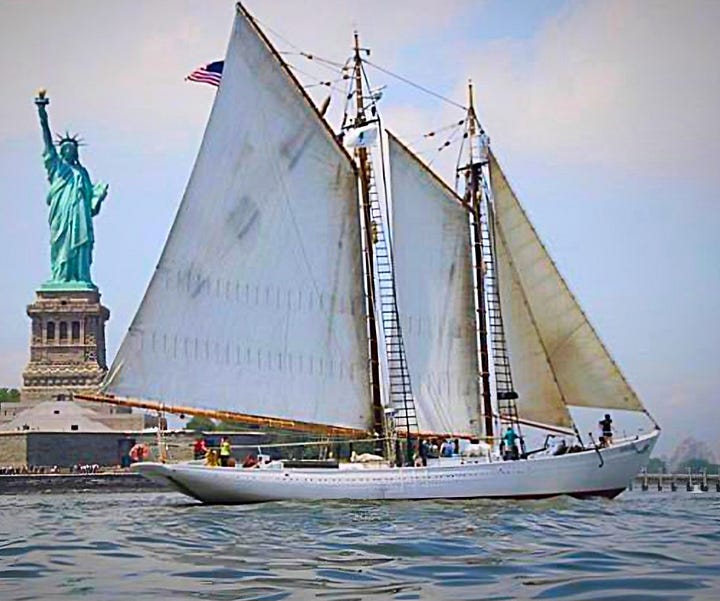
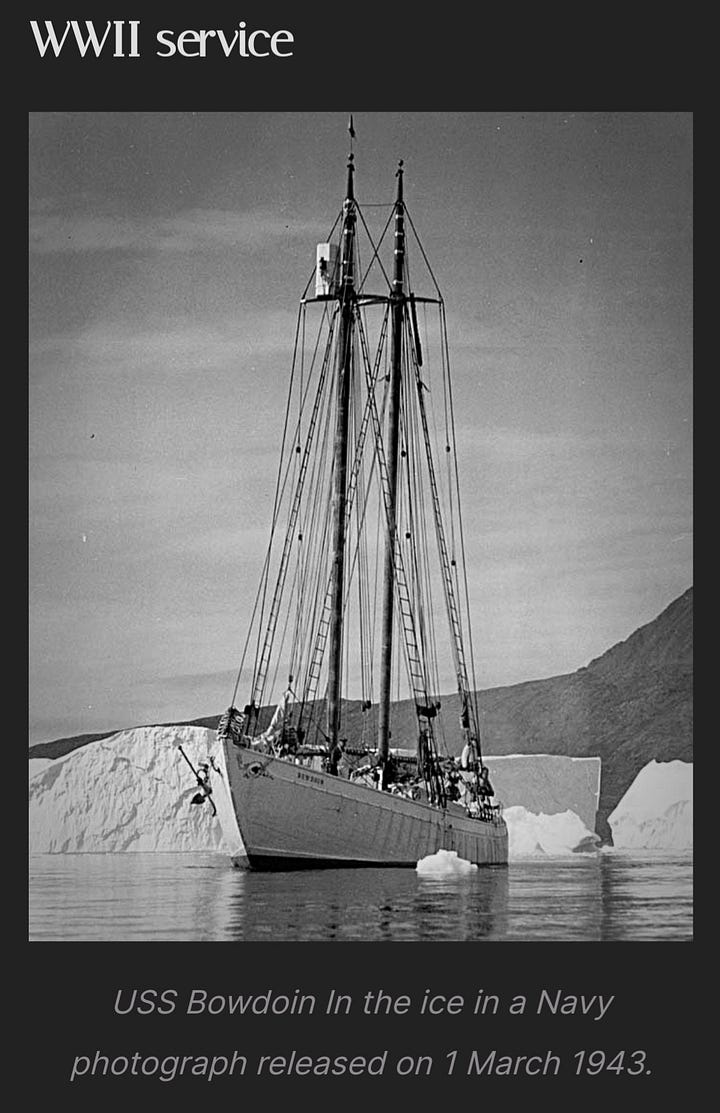
I found the commentary tremendously disrespectful of how and why the roots of humanity took hold predominantly on the coastlines of the world so people could survive, explore and prosper. It took tremendous European resources decades to build each ship for imperialism, commerce, exploration, slaving, war and the transfer of convicted felons to the other side of the planet. Special holds were built just for transporting prisoners in irons; people who could no longer shape their own destiny. I shape my own destiny. Well, not completely, but that is for another day….
“The maintenance on that girl,” a stranger said, standing on my summer dock, shaking his head, interrupting my work. He was feeling sorry for me when I didn’t have any interest in his sympathy. “She’s worth it,” I told him, smiling but abraded by his overstep. “This is my home.” He could not know that when we first moved aboard, “on the hard” (hauled out of the water) at Front Street Boatyard in Belfast, Maine, I would walk around and around her fully exposed hull sides, running my hands over her features, loving the feel of what I now know is pure strength and rugged soul; I was just beginning to understand the energy she conveyed. I spent twenty-five years fully entrenched in Colorado and I wasn’t sure what it was, then; but I felt it, her soul, and now I know it as THE WOODEN BOAT PHENOMENON. I’m onboard in more ways than one and as you can see, I get offended when people say these old boats are not worth saving. I’m all in.
Hand-hewn vessels are integral to the history of humankind. It’s where the term ‘shipping’ came from. Not just for the transport of people, goods, services, and resources, but also exploration, competition, communication, subsistence, and pleasure. The 100,000 subscribers to WoodenBoat Magazine clearly have a vested interest. Wooden vessels are an essential connection to our past, back to when boats were both graceful and useful. It was tall-rigged multi-masted schooners much, much larger than BOWDOIN (think those Pirate ships brought back to life by Disney) that explored every body of water on the planet while SPARRING WITH MOTHER NATURE to such an extent that many never returned. They brought the first Europeans to the Americas, and then transported the wealth of plundered resources; people, commodities, weapons, spices, and treasure all around the (round!) globe. Meanwhile stout-hearted South Pacific Islanders covered thousands of miles in dugouts to inhabit other tiny archipelagoes, some with history that we will never fully understand.
Last winter, in a remote part of the Bahamas, a friend climbed aboard STEADFAST for the first time. He stopped in stunned silence, like many visitors do when they first encounter her soul and are astounded by the solid, old-fashioned, enveloping presence that surrounds them. I love when people feel that; it makes my challenging lifestyle more worthwhile. Those individuals are not necessarily sailors; they do not have to love or understand the seas, the tides, or the currents. It’s safe to say you’ll never experience that particular emotion stepping aboard a brand new shiny Catamaran. You are stepping back in time, like a replica Saloon from the Wild West, swinging doors and all. Tourists wait in long lines to visit the recreated MAYFLOWER, for example; she is a window to the even more distant past.
For a week now, STEADFAST has been back ‘on the hard’ at Yacht Maintenance Company in Cambridge, Maryland, her sailing rig slack and her teak covered protectively, very unexpectedly in for repairs. She is in great company; nearby is SEQUOIA, the Presidential Yacht until President Jimmy Carter sold her in 1980 and the classic Skipjack seen on the right; imagine the stories that fishing vessel could tell!
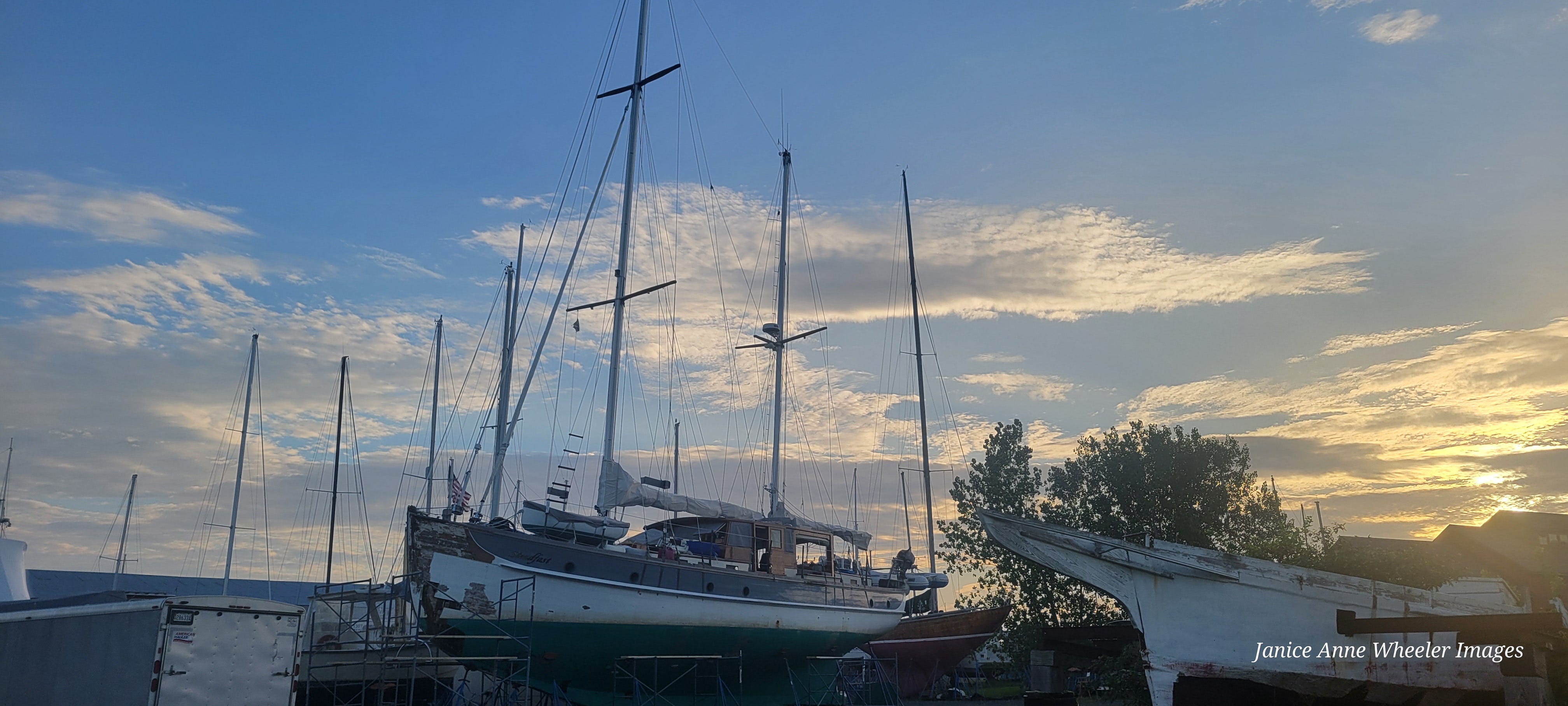
At the beginning of July, on our endless to-do list of life (everybody has one), there was an item listed as bow plank. That seemed simple enough and the Captain took a look, and then a closer look. When that small-and-easy-sounding project was assessed, it wasn’t singular and it won’t be easy. A month later, we are still investigating exactly what havoc the Forces of Nature have wrought behind the mahogany cover boards and below the sturdy decks. We are peering into her past, to the original oak frames still attached to the old-growth long leaf yellow pine planks. Those tremendous pine trees were so valuable that we rather irresponsibly cut them all down decades ago to build ships like this one.
Her ailment is an insidious rot that could not be seen from any angle, inside or outside, save the tiny hole in the one bow plank that made the to-do list. Insidious. My Grandmother Pearl described the cancer that took her life with the same word; I was in college back then and had to look it up. Oxford Dictionary defines insidious as “proceeding in a gradual, subtle way, but with harmful effects.” It has become a very useful word in this crazy, unpredictable world.

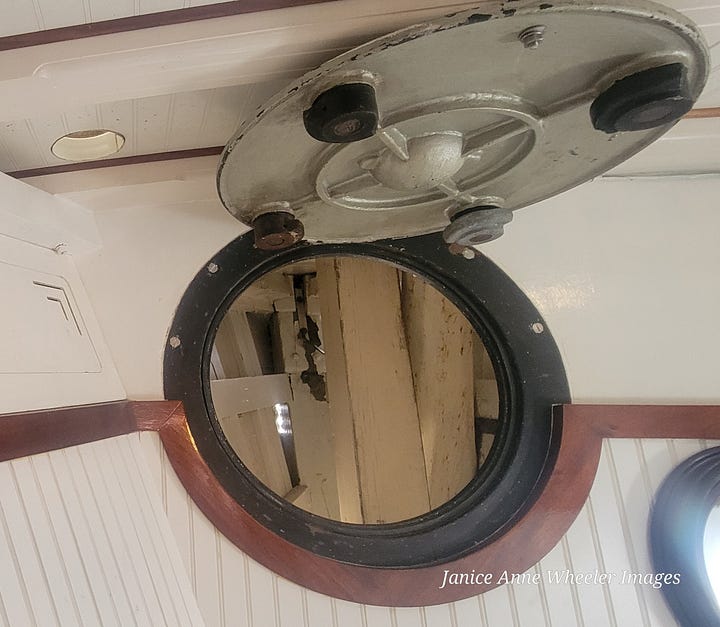
If you haven’t been reading SPARRING WITH MOTHER NATURE since April, I recommend you read OVER AND OVER AND OVER about how this strong boat survived a storm off the coast of the Carolinas, once again carrying us safely to our destination with no indication of weakness. We are incredibly grateful for her.
Please keep following along to further understand THE WOODEN BOAT PHENOMENON. Thank you! Very much.
Substack is such a new concept that I sometimes have a hard time describing what it really is and how it all works. YOU found me and I’m VERY grateful! If you like this and my other works, please do hit the little heart at the bottom of this page as that sends this story to other folks elsewhere. If you are already a subscriber, there is no pressure to upgrade, but please do share, at no expense to you, to friends who may be interested.
Very special recognition to my first and only Founding Subscriber, Josie Beecher. Your support is priceless.
Keeping watching those sunrises and sunsets! I do it every day and in case you don’t get to see them, I offer The Sunrise Project on our Facebook page, YACHTING STEADFAST.





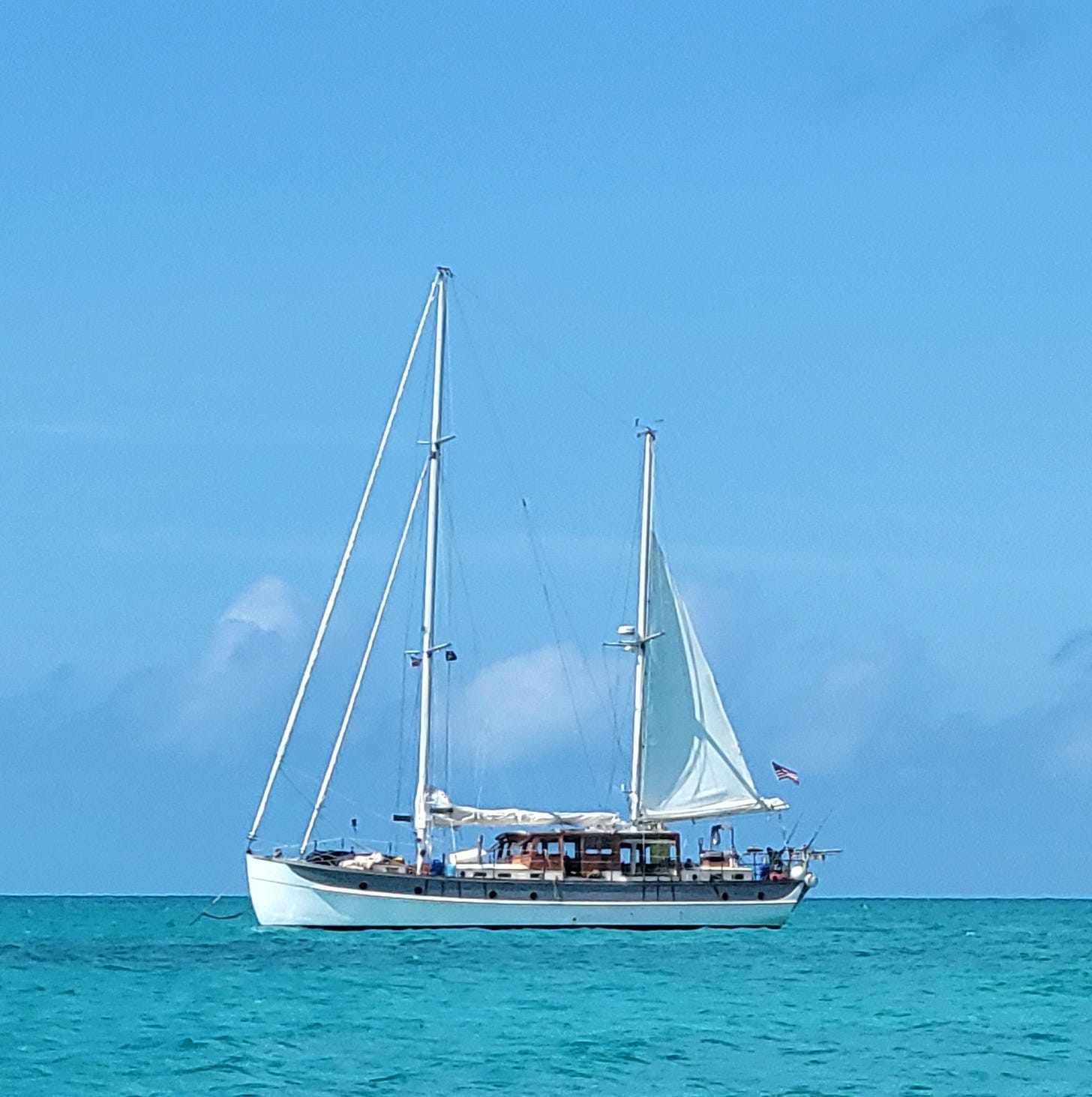

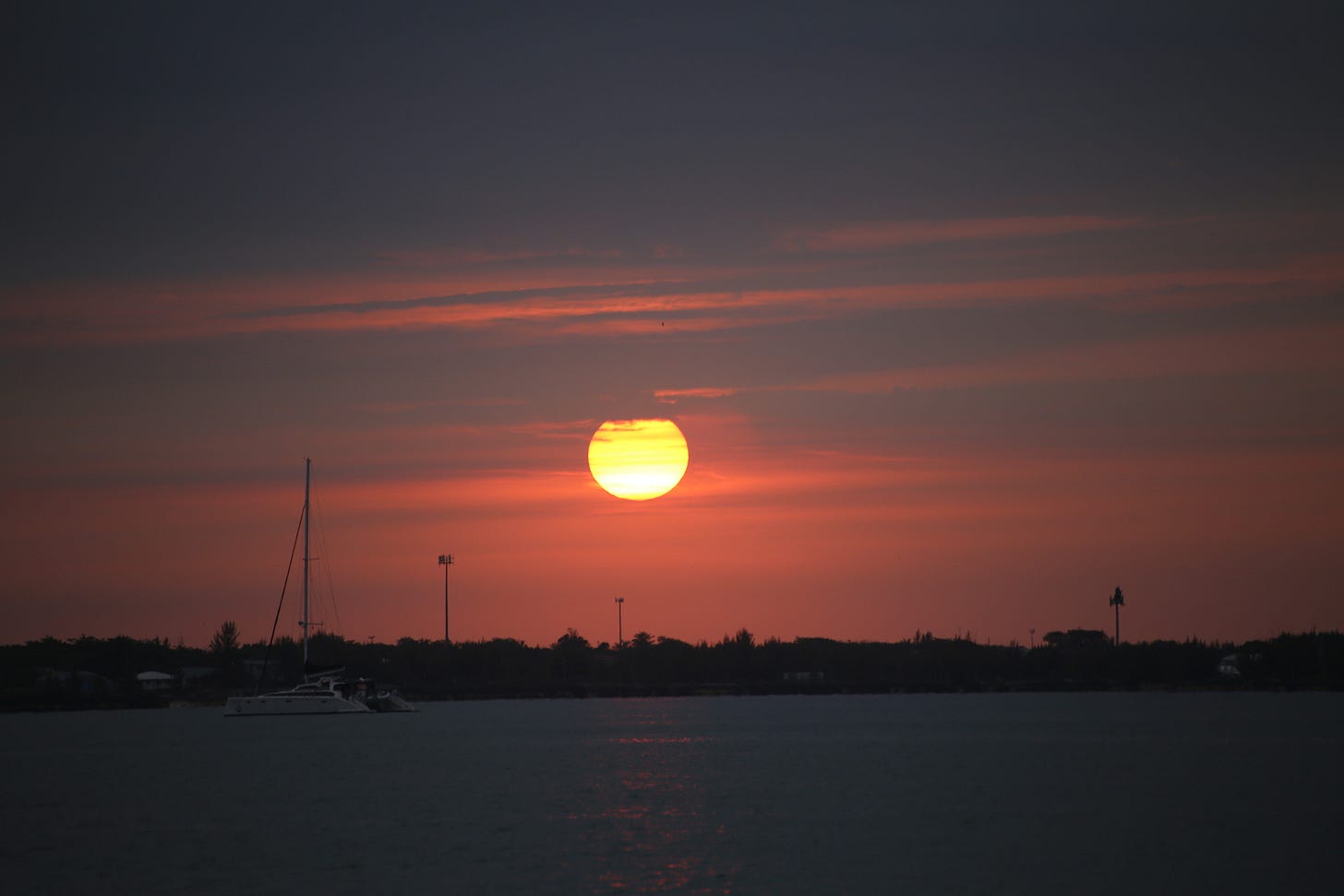
"We are peering into her past, to the original oak frames still attached to the old-growth long leaf yellow pine planks."
I think you would enjoy this short video by Tom Cunliffe.
Tom Cunliffe - Shipbuilding from English Oak
https://youtu.be/_msR3jY9uXo?si=ssa1yYbbwork9EdL
We live in Monterey and driving to work in Salinas each morning is to bear witness to where our produce comes from and the people who do that backbreaking work. And a short drive through our valley is a reminder that to open even an inexpensive bottle of wine is to be heir to the very personal labor, planting and tending to the stocks and vines that bring that harvest to our table.
Cheers!
Oh My Eyes! I read and must re-read every word again. You can put a sentence together, girlfriend! This is ART! Beautiful reflection. Intelligent. Introspective. This is a gift. To us. Namaste